I recently learned that electricity doesn't actually flow from + to - but the other way around..
Keep that in the back of your mind but analyse circuits with current flowing from positive to negative. The convention was established before the discovery of the electron. The convention works and that's what we all use for normal circuit theory.
Audio is alternating voltage and current so + and - is just an indication to get the phase between speakers correct. If you weren't sure about a speaker you could connect a AA battery to its terminals and mark the terminals + and - if the cone pops out rather than in. If you then mark the speaker terminals you know which way to connect them to the amplifier. If you reverse the phase of one channel you will get cancellation in the middle of the stereo image.
So my question would be: if I was using a 2 channel power amp and connected a speaker to it with the positive wire on the left channel (+) and the negative on the right channel (-) would I get the output of the left channel or the right channel?
See below.
I thought the (-) terminal on an amp was just to take the signal and ground it.
It can be as shown in (a) below but not always.

simulate this circuit – Schematic created using CircuitLab
- (a) A typical stereo amplifier with one side of each speaker grounded.
- (b) A speaker connected to L+ and R- will sound the same as L+ to L- as the - terminals are connected internally. You will hear the left channel.
- (c) Many amplifiers such as car audio systems use bridge-mode amplifiers to deliver more power from the low voltage supply. The + and - outputs are in anti-phase and neither is connected to ground.
- (d) If you connect up your speaker L+ to R- on a bridged-mode amplifier you will get L+ - (-R-) = L+ + R-.
If you connect the speaker between L+ and R+ you will hear only the difference between the two channels. This will cut out all the sound in the centre of the stereo panorama - most noticably the bass and bass drum and probably the lead vocals.
